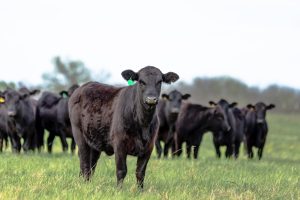Farmers and other agribusiness operators looking for further relief on borrowing costs may need to wait a little longer, with the Reserve Bank of Australia (RBA) expected to hold the official cash rate – a benchmark indicator for market rates – steady at 4.1 per cent at its upcoming policy meeting on April 1.
February inflation data provided further evidence supporting the case for future rate cuts, with headline CPI easing to 2.4 per cent year-on-year, down from 2.5 per cent in January. Core inflation (trimmed mean) also dipped to 2.7 per cent from 2.8 per cent. Softer increases in food, housing, and education costs, alongside falling electricity and fuel prices, contributed to the moderation.
Central bankers unmoved
Despite the encouraging data, the RBA is expected to remain cautious next week, holding steady after delivering its first rate cut in over four years last month. Markets currently assign a 68 per cent probability of a 25 basis point cut in the official cash rate to 3.85 per cent in May, but the central bank has warned that further easing is not guaranteed.
Playing on the minds of the RBA’s monetary policy committee will no doubt be the Federal Government’s surprise $17.1 billion tax cuts – a populist appeal to voters in the upcoming election – announced during the federal budget delivered this week.
Borrowing Rate Implications
While most farmers don’t borrow at the cash rate itself, the RBA’s decision still matters—it sets the tone for broader funding conditions and the general direction of interest rates, particularly the Bank Bill Swap Rate (BBSW), which is the key benchmark for most agribusiness lending.
The BBSW reflects the short-term borrowing cost between highly rated banks and is used by lenders to price business and farm loans, particularly variable-rate facilities. It is typically highly correlated with market expectations for monetary policy. As such, while the RBA’s rate is not directly used in farm lending, it remains a powerful indicator of where borrowing costs are headed.
Bond yields rise, indicating caution
In the meantime, Australia’s 10-year bond yield has edged up to 4.52 per cent, reflecting market caution about inflation risks—especially in light of the federal government’s recently announced $17.1 billion in personal income tax cuts set to begin in 2026.
A breakout or even the slightest upward pressure on inflation will cause markets – and the central bank – to respond with higher interest rates.
What borrowers should do
For Australian farmers, the key takeaway is that achieving lower borrowing costs still requires a proactive approach. With no clear short-term pathway to lower rates, and long-term yields reflecting lingering inflation concerns, borrowers should ensure their debt structures are optimised to minimise exposure to further rate volatility.








